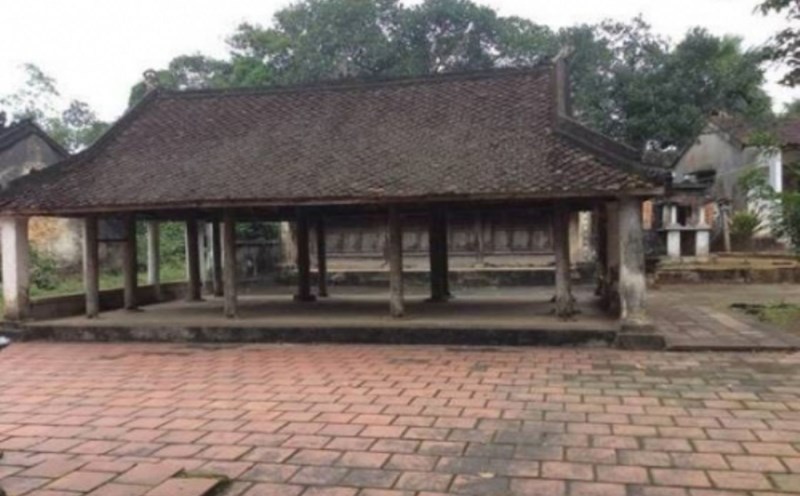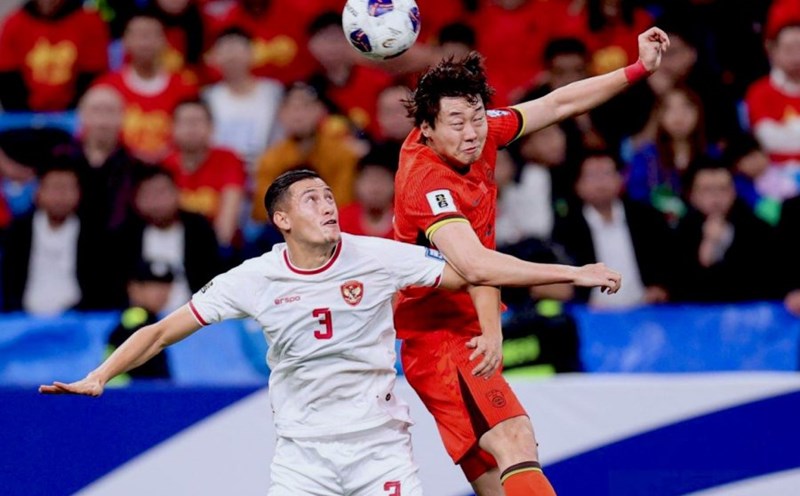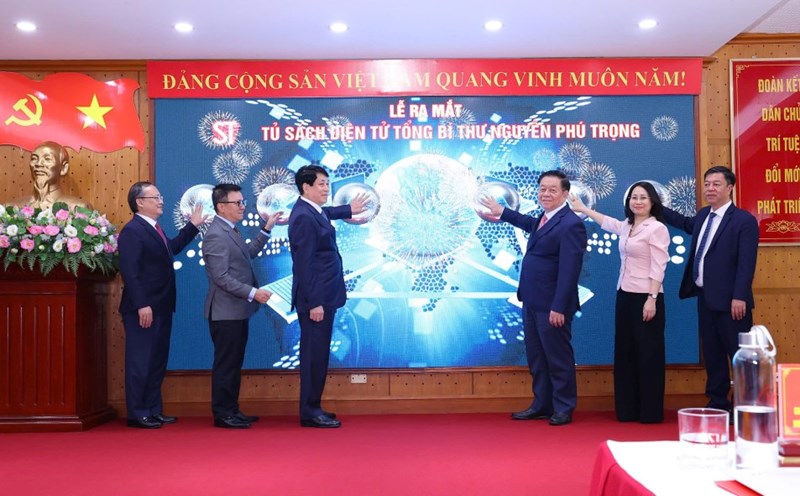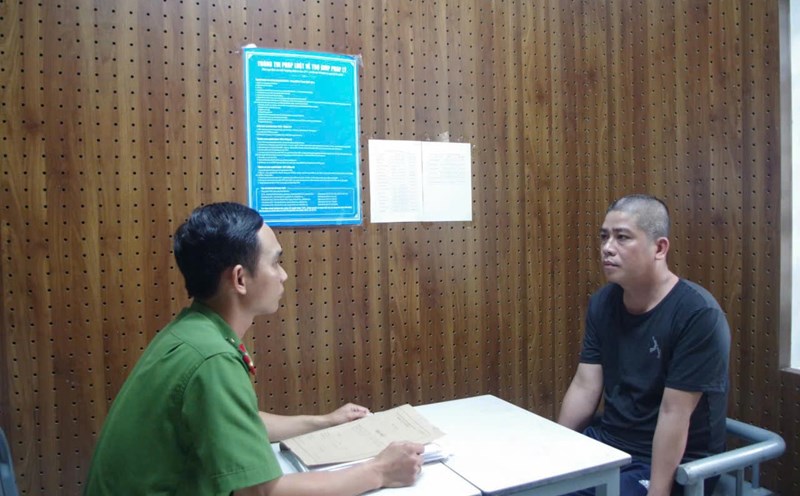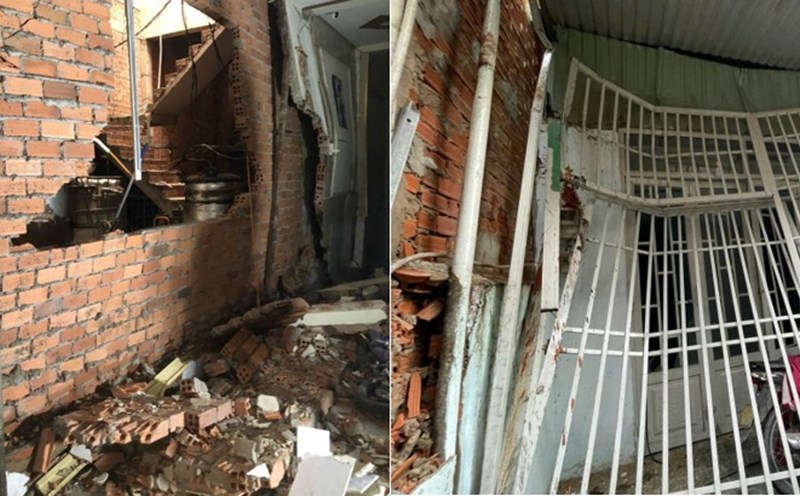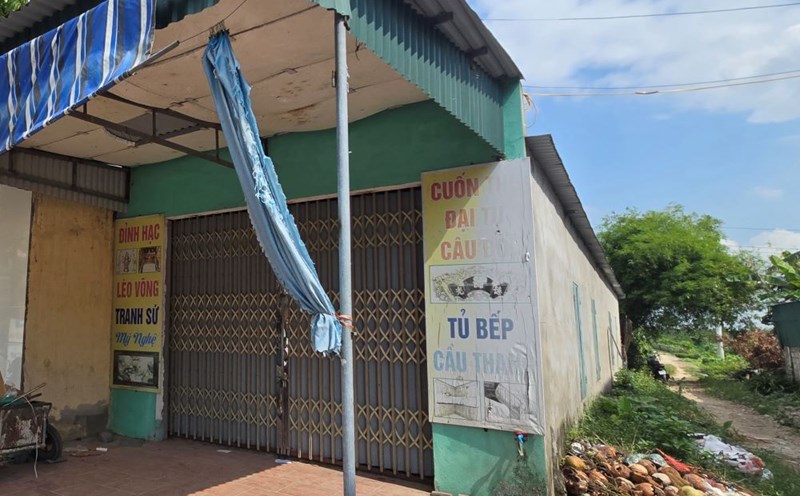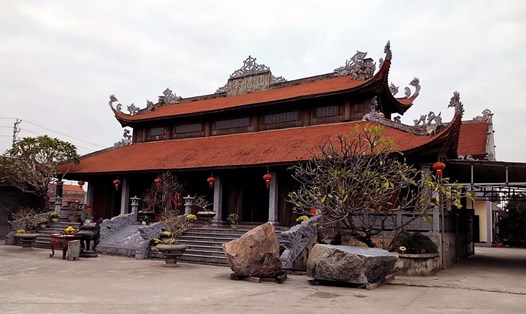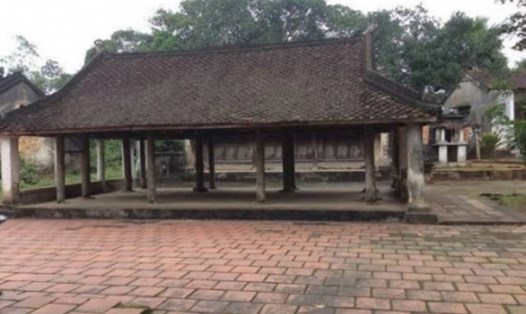Find Lam Son to gather quite early
According to historical records, Le Boi (1380 - 1450) real name is Pham Boi, from Dia Linh village (now Dong Linh, An Bai commune, Quynh Phu district, Thai Binh province) but was born and raised in Tinh Di village, Do Gia district (now Quang Diem commune, Huong Son district, Ha Tinh province), a founding hero of the Later Le dynasty, King Le Thai To granted the national surname Le.
Pham Boi was a man of extraordinary strength, and since childhood he liked to learn martial arts and practice sword and bow practice. He was born in the context of the Ho family usurping the Tran dynasty, causing chaos for the Ngo invaders to take advantage of the opportunity to invade our country. At that time, Pham Boi gathered forces, practiced martial arts and battle formations, and waited for the opportunity to fight the enemy. Hearing that the local leader Le Loi in Lam Son village, Loi Duong district, Thanh Hoa town raised the flag of uprising, Pham Boi returned to join the cause. He was among the 18 people attending the Lung Nhai oath-taking ceremony, joining the Lam Son army . At that time, Binh Dinh King Le Loi assigned him to be the commander of an army of 500 people, with the mission of destroying the Ngo invaders in the mountains of Thanh Hoa.
He was awarded the title of meritorious subject for his achievements and the national surname Le.
According to the "Complete Annals of Dai Viet" on September 20, 1424, the Lam Son army attacked the Da Cang fort, opening the way straight into Nghe An. When crossing Bo Lap mountain in Chau Quy, they encountered the enemy and fought, beheaded the governor Tran Trung and defeated Phuong Chinh's army. They advanced to Chau Tra Lan and fought with the enemy, beheaded Truong Ban, the enemy's commander Su Huu, who escaped. Tran Tri and Phuong Chinh had to retreat to defend Nghe An citadel. Knowing that the Ming army was preparing elephants, horses, boats, and soldiers, they divided into two routes to attack Do Gia. King Le Thai To ordered Le Liet to take 1,000 troops to take a shortcut to defend Do Gia district. The Ming army arrived at Kha Luu and Bo Ai passes and set up camp downstream of Lam River. Our army used a diversionary tactic, burned the camp, pretended to escape upstream.
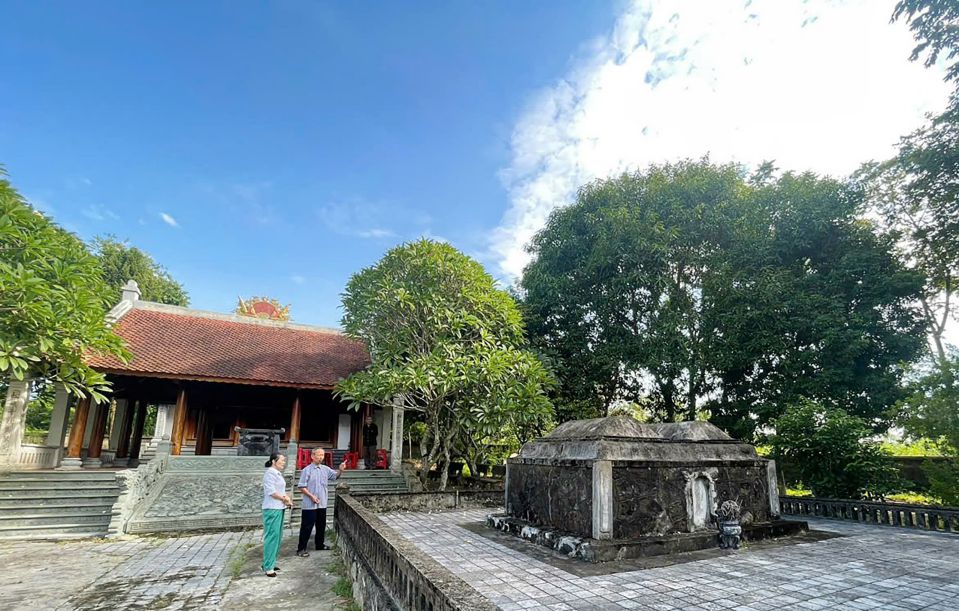
Tran Tri believed that Le Loi had fled, moved to the old camp of the insurgents and built a strong wall on the mountain. Le Loi sent his troops to challenge them. The Ming invaders came out of the ramparts to attack. Our army was waiting in ambush at Bo Ai, guarding the dangerous place: “The king then sent out an ambush to charge into the enemy’s battle. Le Sat, Le Le, Le Van, Le Nhan Chu, Le Ngan, Le Tong Kieu, Le Khoi, Le Boi, and Le Van An fought each other to go first to destroy the enemy, beheading countless enemies. The enemy’s boats were scattered, drowned corpses blocked the river, and weapons were scattered all over the mountains and forests” (Ban Ky Thuc Luc, Vol. 10). The insurgents captured the governor Chu Kiet alive and beheaded the vanguard general Hoanh Thanh.
According to historical records after the victory at Kha Luu and Bo Ai, in the autumn of July 1425, King Le Thai To sent Tran Nguyen Han and Le No to bring 1,000 soldiers and 1 elephant to liberate Tan Binh and Thuan Hoa. The insurgents reported consecutive victories, but on the battlefield, Tran Han and Le No's troops were few, while the Ming army was still very numerous. Tran Han sent someone to urgently request more troops: "The King sent Le Ngan, Le Boi, and Le An to bring 70 warships across the sea straight to that place." With reinforcements, Tran Han, Le No, Le No, and Le Ngan, Le Boi, and Le Van An took advantage of the victory to attack Tan Binh and Thuan Hoa, completely destroying the Ming army. "Tan Binh and Thuan Hoa all belong to us. Le Boi, along with Tran Nguyen Han and other generals, contributed to the victory of liberating Hoa Chau (Quang Tri, Thua Thien - Hue today).
On September 17, 1426, the enemy generals Ly An and Phuong Chinh abandoned Nghe An and fled to Dong Quan, leaving only Thai Phuc to guard Nghe An citadel. The opportunity came, and King Le Thai To sent generals Le Boi, Le Van Linh, Le Ngan, and Le Van An to stay and besiege Nghe An citadel. Then, in December 1426, King Le Thai To sent Le Boi and Le Luu to attack Khau On citadel, a fortified citadel that the enemy had occupied. Dai Viet Su Ky recorded: “On the 13th, Le Luu and Le Boi attacked Khau On citadel day and night. The Ming army realized that they could not resist and abandoned the citadel during the night” (p. 30 Ban Ky Thuc Luc).
Then, on June 10, 1427, the governor of Guangxi, Marquis Tran Vien, Co Hung To, of the Ming Dynasty, brought 50,000 troops and 5,000 horses to the rescue. When they arrived at Pha Luy Pass (Lang Son), they were met by the generals guarding the pass, Le Boi and Le Luu. The Ming army was defeated, and Co Hung To fled. After this victory, General Le Boi was promoted to Lieutenant by King Le Thai To. The King admonished him: "With a high position, do not be negligent day or night, do not be satisfied and neglect to make achievements."
In September of the year Dinh Mui (1427), the Ming emperor ordered the Grand Preceptor An Vien Marquis Lieu Thang, along with Thoi Tu, Luong Minh, Ly Khanh, and Hoang Phuc to bring 100,000 troops and 20,000 horses to attack Pha Luy Pass. The Kiem Quoc Cong Moc Thach brought 50,000 troops to attack Le Hoa Pass. According to the strategy of luring the enemy, the generals Le Luu and Le Boi guarding Pha Luy Pass saw the enemy coming and retreated to Luu Pass. When the enemy came to attack, Boi and Luu abandoned Luu Pass and retreated to guard Chi Lang. When Lieu Thang arrived at Chi Lang, Le Luu pretended to attack and then fled. Lieu Thang led his troops to pursue them to the ambush, but Le Boi and Le Luu turned back, Le Sat, and Luu Nhan Chu rushed out to attack and beheaded Lieu Thang at Ma Yen Mountain. They also beheaded Luong Minh and Ly Khanh in battle, while Thoi Tu and Hoang Phuc were captured alive.
In February 1428, the levels of rewards for the hard work of 221 heroes and the Iron Cavalry were determined, divided into 3 ranks. Le Boi was ranked 3rd, granted the national surname Le, and the title Tri Tu: "On May 3, year Ky Dau (1429), the 2nd year of the Le Thai To dynasty, the meritorious mandarin rank was granted to 93 people. Le Boi ranked 3rd out of 14 Liet Hau, or ranked 6th out of 26 A Hau" (Famous people of Ha Tinh, p. 68).
Peace helps the king to pacify the people and suppress rebellions.
After King Le Thai To ascended the throne and established the Later Le Dynasty, as a founding hero, Le Boi and many famous generals continued to assist the king in pacifying the people and governing the country, strengthening national defense, expanding the territory, and maintaining the border. He was trusted and respected by the kings Thai To, Thai Tong, and Nhan Tong.
In the year of Giap Dan (1434), the king sent Le Boi to recruit young men from the provinces to serve as soldiers. According to historical records, on November 21, At Mao year (1435), the Tu Ma of Tay Dao Le Boi was appointed as General Manager, Le Van Linh as Tham Doc, and mobilizing the guards in 5 provinces and 20,000 troops of Nghe An to attack the rebel Cam Quy occupying Ngoc Ma district (Huong Khe - Ha Tinh). Le Boi captured Cam Quy, packed him with firewood, and brought him back to the capital to be punished. In June, Dinh Ty year (1437), Le Boi was appointed as General Manager of Dong Dao. When the "lychee garden" incident happened, King Le Thai Tong passed away on August 12, 1442, General Manager Le Boi had the merit of enthroning Crown Prince Bang Co: "On the 12th day, the great ministers Trinh Kha, Nguyen Xi, and Le Thu received the will together with Le Liet and Le Boi to enthrone Crown Prince Bang Co" (Ban Ky Thuc Luc, Vol. 11).
At that time, the Champa army often harassed Hoa Chau. Despite his old age, Le Boi was still enthusiastic in setting out to pacify Champa, following the royal court's order: "In the summer, May, the second year of the Thai Hoa era (1444), the Champa lord Bi Cai invaded and captured Hoa Chau citadel and captured the people. He ordered the Royal Inspector Le Boi and the General Manager Le Kha to lead 100,000 troops to attack" (Continued Chronicles, Vol. 11). The Vietnam - Champa war lasted for 3 years, until April 1446, when Bi Cai and his concubines, elephants, horses, weapons, and provisions were captured and the troops withdrew, ending the war.
General Le Boi, Royal Inspector of the Interior, served under three early Le kings. He was an honest, diligent, and devoted mandarin. He completed every task assigned to him by the king and was praised and given money. Historical records state: “In the second month of the year Ky Ty (1449), the former General Le Boi was given 20 quan of money. Boi was a founding hero who had suffered from a stroke for a long time and had been idle for 17 years. Now that his illness had subsided, he was invited to attend court, so he was given a special reward” (ibid.).
“Thus, the old history records that the General Manager Le Boi was a founding hero of the Le Dynasty. He was born around 1380 and died on January 16 around 1450, buried in Ma Co, Tung Anh village. Le Boi made many great contributions under the early Le Dynasty - especially in the resistance war against the invading Ming army in the early 15th century, he was a veteran of many battles with resounding victories with the generals of the Lam Son uprising in Kha Luu - Bo Ai, Tan Binh, Thuan Hoa, Nghe An citadel, Khau On, Pha Luy...” (Famous people of Ha Tinh). In 1458, descendants of the family and people built a temple in Viet Yen village. During the war against the US, the temple was destroyed by bombs, after the war, the Le family restored the Le Boi temple in Tung Anh commune, Duc Tho district, the address where he was granted a fief by King Le Thai To.
After the successful resistance, Le Boi was awarded the title of meritorious mandarin, held the position of General Manager during the reign of Le Thai To and was granted a fief in Viet Yen (today's Tung Anh commune). Through three early Le dynasty kings, he was considered and highly regarded. Le Boi, with his support, was promoted to the position of Nhap Noi Kiem Hieu Thai Bao, the highest position.



